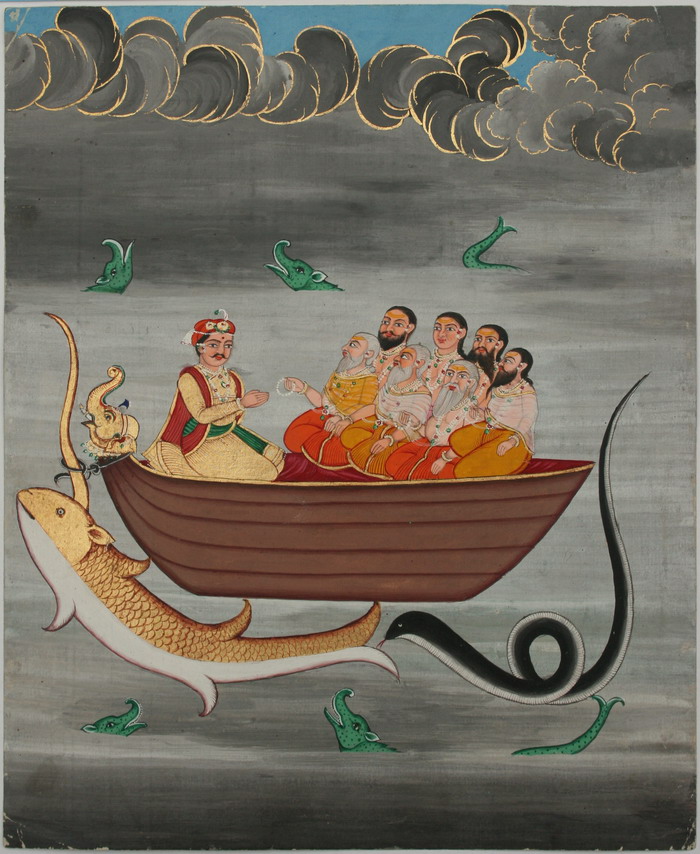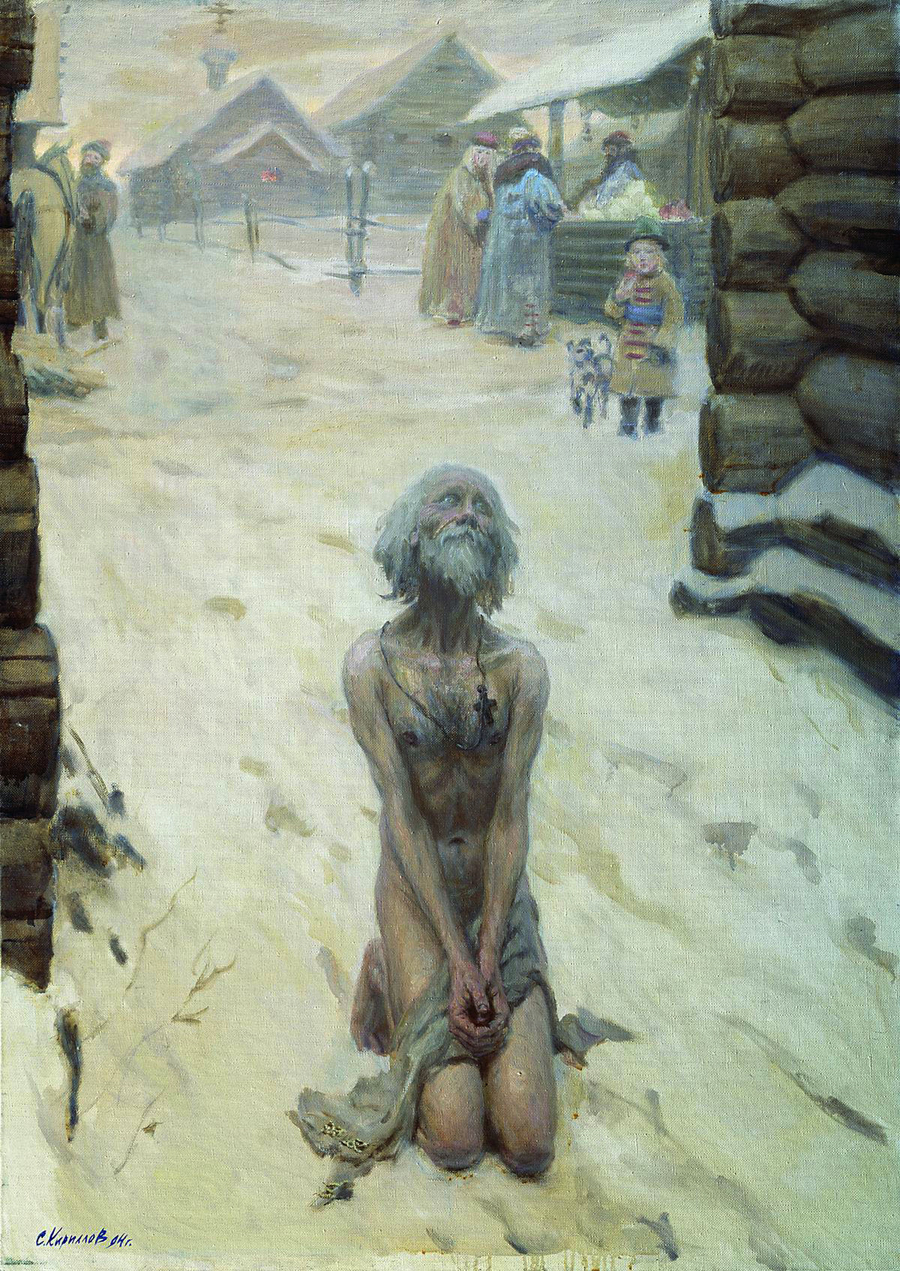|
Rishi
In Indian religions, a ''rishi'' ( ) is an accomplished and enlightened person. They find mention in various Vedic texts. Rishis are believed to have composed hymns of the Vedas. The Post-Vedic tradition of Hinduism regards the rishis as "great yogis" or "sages" who after intense meditation (Tapas (Sanskrit), tapas) realized the supreme truth and eternal knowledge, which they composed into hymns.Hartmut Scharfe (2002), Handbook of Oriental Studies, BRILL Academic, , pp. 13–15. The term appears in Pali literature as Ishi; in Buddhism they can be either Buddhas, Pratyekabuddha, Paccekabuddhas, Arhat, Arahats or a Buddhist monasticism, monk of high rank. Etymology According to Indian tradition, the word may be derived from two different meanings of the root 'rsh' (). Sanskrit grammarians derive this word from the second meaning: "to go, to move". V. S. Apte gives this particular meaning and derivation, and Monier-Williams also gives the same, with some qualification. Another ... [...More Info...] [...Related Items...] OR: [Wikipedia] [Google] [Baidu] [Amazon] |
Rigveda
The ''Rigveda'' or ''Rig Veda'' (, , from wikt:ऋच्, ऋच्, "praise" and wikt:वेद, वेद, "knowledge") is an ancient Indian Miscellany, collection of Vedic Sanskrit hymns (''sūktas''). It is one of the four sacred canonical Hindu texts (''śruti'') known as the Vedas. Only one Shakha of the many survive today, namely the Shakala Shakha, Śakalya Shakha. Much of the contents contained in the remaining Shakhas are now lost or are not available in the public forum. The ''Rigveda'' is the oldest known Vedic Sanskrit text. Its early layers are among the oldest extant texts in any Indo-European language. Most scholars believe that the sounds and texts of the ''Rigveda'' have been orally transmitted with precision since the 2nd millennium BCE, through Indian mathematics#Styles of memorisation, methods of memorisation of exceptional complexity, rigour and fidelity, though the dates are not confirmed and remain contentious till concrete evidence surfaces. Philolog ... [...More Info...] [...Related Items...] OR: [Wikipedia] [Google] [Baidu] [Amazon] |
Vedic Text
upright=1.2, The Vedas are ancient Sanskrit texts of Hinduism. Above: A page from the '' Atharvaveda''. The Vedas ( or ; ), sometimes collectively called the Veda, are a large body of religious texts originating in ancient India. Composed in Vedic Sanskrit, the texts constitute the oldest layer of Sanskrit literature and the oldest scriptures of Hinduism. There are four Vedas: the Rigveda, the Yajurveda, the Samaveda and the Atharvaveda. Each Veda has four subdivisions – the Samhitas (mantras and benedictions), the Brahmanas (commentaries on and explanation of rituals, ceremonies and sacrifices – Yajñas), the Aranyakas (text on rituals, ceremonies, sacrifices and symbolic-sacrifices), and the Upanishads (texts discussing meditation, philosophy and spiritual knowledge).Gavin Flood (1996), ''An Introduction to Hinduism'', Cambridge University Press, , pp. 35–39A Bhattacharya (2006), ''Hindu Dharma: Introduction to Scriptures and Theology'', , pp. 8–14; George M. Willi ... [...More Info...] [...Related Items...] OR: [Wikipedia] [Google] [Baidu] [Amazon] |
Vedas
FIle:Atharva-Veda samhita page 471 illustration.png, upright=1.2, The Vedas are ancient Sanskrit texts of Hinduism. Above: A page from the ''Atharvaveda''. The Vedas ( or ; ), sometimes collectively called the Veda, are a large body of religious texts originating in ancient India. Composed in Vedic Sanskrit, the texts constitute the oldest layer of Sanskrit literature and the oldest Hindu texts, scriptures of Hinduism. There are four Vedas: the Rigveda, the Yajurveda, the Samaveda and the Atharvaveda. Each Veda has four subdivisions – the Samhitas (mantras and benedictions), the Brahmanas (commentaries on and explanation of rituals, ceremonies and sacrifices – Yajñas), the Aranyakas (text on rituals, ceremonies, sacrifices and symbolic-sacrifices), and the Upanishads (texts discussing meditation, philosophy and spiritual knowledge).Gavin Flood (1996), ''An Introduction to Hinduism'', Cambridge University Press, , pp. 35–39A Bhattacharya (2006), ''Hindu Dharma: Introduc ... [...More Info...] [...Related Items...] OR: [Wikipedia] [Google] [Baidu] [Amazon] |
Hinduism
Hinduism () is an Hypernymy and hyponymy, umbrella term for a range of Indian religions, Indian List of religions and spiritual traditions#Indian religions, religious and spiritual traditions (Sampradaya, ''sampradaya''s) that are unified by adherence to the concept of ''dharma'', a Ṛta, cosmic order maintained by its followers through rituals and righteous living, as expounded in the Vedas. The word ''Hindu'' is an exonym, and while Hinduism has been called the oldest religion in the world, it has also been described by the modern term ''Sanātana Dharma'' () emphasizing its eternal nature. ''Vaidika Dharma'' () and ''Arya dharma'' are historical endonyms for Hinduism. Hinduism entails diverse systems of thought, marked by a range of shared Glossary of Hinduism terms, concepts that discuss God in Hinduism, theology, Hindu mythology, mythology, among other topics in Hindu texts, textual sources. Hindu texts have been classified into Śruti () and Smṛti (). The major Hin ... [...More Info...] [...Related Items...] OR: [Wikipedia] [Google] [Baidu] [Amazon] |
Saint
In Christianity, Christian belief, a saint is a person who is recognized as having an exceptional degree of sanctification in Christianity, holiness, imitation of God, likeness, or closeness to God in Christianity, God. However, the use of the term ''saint'' depends on the context and Christian denomination, denomination. In Anglican Communion, Anglican, Oriental Orthodox, and Lutheranism, Lutheran doctrine, all of their faithful deceased in Heaven are considered to be saints, but a selected few are considered worthy of greater honor or emulation. Official Ecclesiastical polity, ecclesiastical recognition, and veneration, is conferred on some denominational saints through the process of canonization in the Catholic Church or glorification in the Eastern Orthodox Church after their approval. In many Protestant denominations, and following from Pauline usage, ''saint'' refers broadly to any holy Christian, without special recognition or selection. While the English word ''saint'' ... [...More Info...] [...Related Items...] OR: [Wikipedia] [Google] [Baidu] [Amazon] |
Indian Religions
Indian religions, sometimes also termed Dharmic religions or Indic religions, are the religions that originated in the Indian subcontinent. These religions, which include Buddhism, Hinduism, Jainism, and Sikhism,Adams, C. J."Classification of religions: Geographical"(), ''Encyclopædia Britannica'', 2007. Retrieved 15 July 2010. are also classified as Eastern religions. Although Indian religions are connected through the history of India, they constitute a wide range of religious communities, and are not confined to the Indian subcontinent. Evidence attesting to prehistoric religion in the Indian subcontinent derives from scattered Mesolithic rock paintings. The Harappan people of the Indus Valley civilisation, which lasted from 3300 to 1300 BCE (mature period 2600–1900 BCE), had an early urbanized culture which predates the Vedic religion. The documented history of Indian religions begins with the historical Vedic religion, the religious practices of the early Indo- ... [...More Info...] [...Related Items...] OR: [Wikipedia] [Google] [Baidu] [Amazon] |
Buddhas
In Buddhism, Buddha (, which in classic Indic languages means "awakened one") is a title for those who are spiritually awake or enlightened, and have thus attained the supreme goal of Buddhism, variously described as awakening or enlightenment (''bodhi''), '' Nirvāṇa'' ("blowing out"), and liberation (''vimokṣa''). A Buddha is also someone who fully understands the '' Dhārma'', the true nature of all things or phenomena ('' dhārmata''), the ultimate truth. Buddhahood (Sanskrit: ''buddhatva''; or ; zh, c=成佛) is the condition and state of being a Buddha. This highest spiritual state of being is also termed ''sammā-sambodhi'' (Sanskrit: ''samyaksaṃbodhi''; "full, complete awakening") and is interpreted in many different ways across schools of Buddhism. The title of "Buddha" is most commonly used for Gautama Buddha, the historical founder of Buddhism, who is often simply known as "the Buddha". The title is also used for other sentient beings who have achiev ... [...More Info...] [...Related Items...] OR: [Wikipedia] [Google] [Baidu] [Amazon] |
Brihadaranyaka Upanishad
The ''Brihadaranyaka Upanishad'' (, ) is one of the Mukhya Upanishads, Principal Upanishads and one of the first Upanishadic scriptures of Hinduism. A key scripture to various schools of Hinduism, the ''Brihadaranyaka Upanisad'' is tenth in the Muktikā or "canon of 108 Upanishads". The ''Brihadaranyaka Upanishad'' is estimated to have been composed about 7th–6th century BCE, excluding some parts estimated to have been composed after the ''Chandogya Upanishad''. The Sanskrit language text is contained within the ''Shatapatha Brahmana'', which is itself a part of the Yajurveda#Shukla Yajurveda, Shukla Yajur Veda. The ''Brihadaranyaka Upanishad'' is a treatise on Ātman (Hinduism), Ātman (Self), includes passages on metaphysics, ethics, and a yearning for knowledge that influenced various Indian religions, ancient and medieval scholars, and attracted secondary works such as those by Adi Shankara and Madhvacharya. Chronology The chronology of ''Brihadaranyaka Upanishad'', like o ... [...More Info...] [...Related Items...] OR: [Wikipedia] [Google] [Baidu] [Amazon] |
Yurodivy
Foolishness for Christ (; ) refers to behavior such as giving up all one's worldly possessions upon joining an ascetic order or religious life, or deliberately flouting society's conventions to serve a religious purpose—particularly of Christianity. Such individuals have historically been known as both "holy fools" and "blessed fools". The term "fool" connotes what is perceived as feeblemindedness, and " blessed" or "holy" refers to innocence in the eyes of God.Frith, Uta. (1989) Autism: The Elegant Enigma. Malden, MA: Blackwell Publishing. The term ''fools for Christ'' derives from the writings of Paul the Apostle. Desert Fathers and other saints acted the part of Holy Fools, as have the ''yurodivy'' (or iurodstvo) of Eastern Orthodox asceticism. Fools for Christ often employ shocking and unconventional behavior to challenge accepted norms, deliver prophecies, or to mask their piety.Parry (1999), p. 233 Old Testament Certain prophets of the Old Testament who exhibited signs ... [...More Info...] [...Related Items...] OR: [Wikipedia] [Google] [Baidu] [Amazon] |
Ṛta
In the Historical Vedic religion, Vedic religion, ''Ṛta'' (International Phonetic Alphabet, /ɹ̩t̪ɐ/; Sanskrit ' "order, rhythm, rule; truth; logos") is the principle of natural order which regulates and coordinates the operation of the universe and everything within it. In the hymns of the Vedas, ''Ṛta'' is described as that which is ultimately responsible for the proper functioning of the natural, moral and sacrificial orders. Conceptually, it is closely allied to the injunctions and ordinances thought to uphold it, collectively referred to as ''Dharma'', and the action of the individual in relation to those ordinances, referred to as ''Karma'' – two terms which eventually eclipsed ''Ṛta'' in importance as signifying natural, religious and moral order in later Hinduism. Sanskrit scholar Maurice Bloomfield referred to ''Ṛta'' as "one of the most important religious conceptions of the Rigveda", going on to note that, "from the point of view of the history of religiou ... [...More Info...] [...Related Items...] OR: [Wikipedia] [Google] [Baidu] [Amazon] |
Julius Pokorny
Julius Pokorny (12 June 1887 – 8 April 1970) was an Austrian-Czech linguist and scholar of the Celtic languages and of Celtic studies, particularly of the Irish language, and a supporter of Irish nationalism. He held academic posts in Austrian and German universities. Early life and education Julius Pokorny was born on 12 June 1887 in Prague, Bohemia, under the Austro-Hungarian Empire. He was educated at the Piarist School in Prague and the Benedictine Abbey school in Kremsmünster, Austria. From 1905 until 1911, he studied at the University of Vienna, graduating in law and philology, and he taught there from 1913 to 1920. Career During World War I, Pokorny was a pro-German propagandist, urging Irish republicans to launch the Easter Rising against the British Empire. He is known to have met and corresponded with Roger Casement, an activist for Irish independence who was executed in 1916. Pokorny also served in the war as a reservist in the Austro-Hungarian Army (Cisleitha ... [...More Info...] [...Related Items...] OR: [Wikipedia] [Google] [Baidu] [Amazon] |






